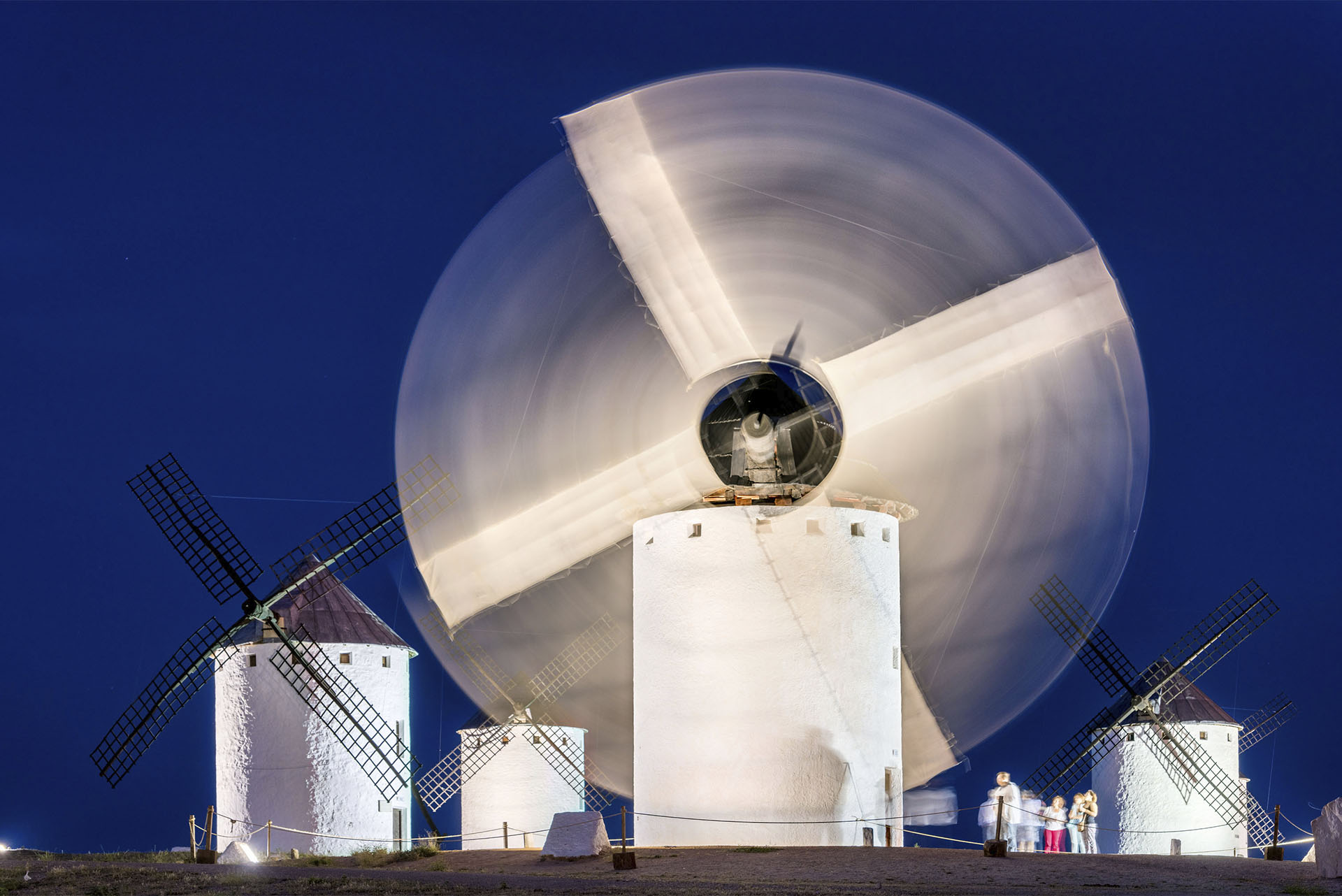This is the place that inspired Cervantes to narrate the most famous adventure of his most famous work and summit of universal literature: the battle of Don Quixote against the windmills. Those giants against which the ingenious hidalgo fought crown the Sierra de los Molinos de Campo de Criptana.
In the middle of the 18th century, 34 windmills had been registered; Today you will find a total of ten, three of them original from the 16th century. But apart from this indisputable stamp of identity, Campo de Criptana offers the captivating essence of the Albaicín –paradigm of the La Mancha neighborhood–, civil and religious buildings, wineries and wines, gastronomy, festivals and natural resources.
The Sierra de los Molinos will be the starting point of the route and, from there, we will go down to the historic center.
- Infanto Mill: it preserves the original structure and mechanism of the s. XVI.
- Molino Culebro: museum dedicated to Sara Montiel, the first Spanish actress to triumph in Hollywood
- Cave-House: millers’ dwelling excavated in the rock, from the s. XVI and set at the time. The upper floor houses a shop with typical products and handicrafts.
- Eloy Teno Museum, Artisan Space. Hosts exhibitions by renowned artists.
In the Cerro de la Paz there is one of the oldest hermitages in the town (that of the Virgen de la Paz). From here you can contemplate wonderful views of the immense La Mancha plain tinged with other colors. From here, in just 10 minutes walking you can reach the center.

Escalerillas street is a typical stepped road, ideal to start the descent from Cerro de la Paz to the historic center. From there, you can arrive at the Fuente del Moco, a source from the mountains. On the walk you will descend through the Albaicín neighborhood and you will be able to stop at the cave houses: the archetype of the La Mancha neighborhood, with its houses made of Arabic tiles and painted in white and indigo, narrow streets and steep slopes.
Passing through the hermitage of Veracruz and the Plaza Mayor you will arrive at the Pósito Real. El Pósito is a 16th century building and housed an agricultural bank. In 1991 it became municipal property and today it is the Municipal Museum, it contains a permanent exhibition of archeology, houses temporary exhibitions, conferences and institutional events.
Campo de Criptana and La Mancha cannot be understood without tasting their typical gastronomy or tasting their wines and oils. Apart from the many bars and restaurants where you can do it, the cheese factories, the oil mill and the different wineries preserve this gastronomic heritage and its visit is highly recommended.


